Features: Gungriffon – The Forgotten Conflict
Posted on : 16-11-2009 | By : Cacophanus | In : Features
Hardware: PlayStation 2, Sega Saturn, Xbox
10
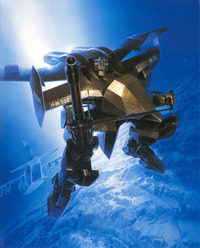 As a developer GameArts are known most for their work on the wondrous Grandia games as well as their input to the Silpheed series, but they’ve also produced a rather well wrought selection of mecha games too.
As a developer GameArts are known most for their work on the wondrous Grandia games as well as their input to the Silpheed series, but they’ve also produced a rather well wrought selection of mecha games too.
Specifically, the four Gungriffon games that have graced multiple consoles over the years. These games pre-date From Software’s perennial Armored Core series but due to a number of factors, both cultural and financial, the games have never quite garnered the appreciation they so sorely deserved.
This is not to say that the Gungriffon games haven’t been critically lauded over the years but they haven’t reached the broader appeal that something like Heavy Gear did for instance, despite both series sharing similar base rulesets for the mecha. Amusingly, the design of mecha themselves has often been mistakenly attributed to be Western in origin, despite the obvious linkages to Ryosuke Takahashi’s VOTOMS series, something that again Heavy Gear shares. As such, we’ll delve into the series as a whole and examine what has made these games remain such a cult hit.
Gungriffon (Saturn)
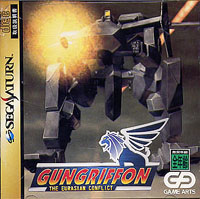 In March of 1996, a new kind of mecha game was released to the world. Set in the first person, the player worked within the cockpit of an Armored Walking Gun System (or AWGS) mecha as they traversed massive battle fields also teeming with similar enemy units. As Saturn games went Gungriffon was graphically particularly advanced for the time and, despite a moderate learning curve with the controls, quite tactile too. Heavily inspired by the functional parameters seen in VOTOMS, the AWGS mecha in Gungriffon utilised rollers in their feet but unlike the AT’s in VOTOMS could also fly for a short period as well.
In March of 1996, a new kind of mecha game was released to the world. Set in the first person, the player worked within the cockpit of an Armored Walking Gun System (or AWGS) mecha as they traversed massive battle fields also teeming with similar enemy units. As Saturn games went Gungriffon was graphically particularly advanced for the time and, despite a moderate learning curve with the controls, quite tactile too. Heavily inspired by the functional parameters seen in VOTOMS, the AWGS mecha in Gungriffon utilised rollers in their feet but unlike the AT’s in VOTOMS could also fly for a short period as well.
Unlike Virtual On, which was then 6 months away from a console release, Gungriffon was a very straightforward and direct mecha game. Where the player basically just had to point and shoot for the most part. However, unlike a standard approach to an FPS, the mecha retained their mass and subsequent momentum. Managing the additional roller and flight elements also added an extra layer of depth as well.
On paper, this sounds like an instant gaming hit and it had also gotten the drop on the first Armored Core by a good 18 months. In addition, it received a swift release across the world. So what went wrong?
The main issue with the original Gungriffon’s lack of sales was mostly down to the console it was released on. Despite all of its graphical veneer and functional prowess, the Saturn’s lack of popularity left the first Gungriffon almost dead on arrival. It garnered a selection of very positive reviews though and the Western press, for once, actually appreciated what the game was trying to achieve. However, the more mainstream gamers failed to take stock of the game’s existence. This was especially true outside of Japan.
Gungriffon II (Saturn)
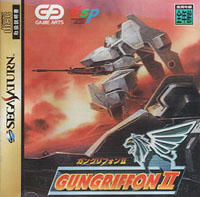 Released two years later, Gungriffon II had a long list of improvements in the form of additional control features as well as 4 player multiplayer (if you linked your Saturn’s together). From the optional usage of Virtual On’s twinsticks to the ability for two players to control one AWGS. GameArts added a fair amount to the already existing game. Unfortunately, the game hadn’t moved on graphically at all and some even thought the game had regressed visually. This significantly harmed the game in terms of sales in Japan, though it still retained a favourable critical response in light of its functional improvements.
Released two years later, Gungriffon II had a long list of improvements in the form of additional control features as well as 4 player multiplayer (if you linked your Saturn’s together). From the optional usage of Virtual On’s twinsticks to the ability for two players to control one AWGS. GameArts added a fair amount to the already existing game. Unfortunately, the game hadn’t moved on graphically at all and some even thought the game had regressed visually. This significantly harmed the game in terms of sales in Japan, though it still retained a favourable critical response in light of its functional improvements.
Ultimately though, the game remained as taut as its previous offering but unlike the previous game this iteration wasn’t published by GameArts. Instead ESP stepped in and covered off the financial backing. This might explain why it was rushed to release, as ESP probably wanted to make good on their investment before the Dreamcast was released later in the year. This would have explained the obvious lack of visual polish prior to release. This wouldn’t be the first time that a separate publisher sullied the Gungriffon series either.
Gungriffon Blaze (PlayStation 2)
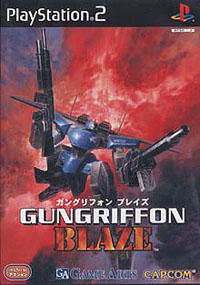 After the lacklustre sales of the Saturn games, GameArts obviously decided to put Gungriffon on a console that had a greater number of units in the marketplace. Gungriffon Blaze was the game that followed this thinking and was launched on the PlayStation 2 very near to the console’s release. Admittedly, they took a gamble but the reasoning that the PlayStation 2 would follow on from the success of the original PlayStation was suitably sound at the time. They’d also put more development time into this sequel and the subsequent polish was self evident.
After the lacklustre sales of the Saturn games, GameArts obviously decided to put Gungriffon on a console that had a greater number of units in the marketplace. Gungriffon Blaze was the game that followed this thinking and was launched on the PlayStation 2 very near to the console’s release. Admittedly, they took a gamble but the reasoning that the PlayStation 2 would follow on from the success of the original PlayStation was suitably sound at the time. They’d also put more development time into this sequel and the subsequent polish was self evident.
Consequently, Blaze did very well and not only garnered further critical acclaim but also reached gamers the prior two Saturn efforts had wholly failed to. Unfortunately, Armored Core 2 was released literally a week before Blaze in Japan so this was the first and only time the two series battled it out on the same platform. Despite it’s quality Blaze was pretty much eclipsed by Armored Core 2 on launch, which is obviously unfortunate but Armored Core had greater momentum as it had secured a bigger and more loyal fanbase in the years earlier.
That said, Blaze is possibly the finest iteration in the Gungriffon series. As its speed and responsive controls made it a truly visceral arcade experience, though some argue this was down to Capcom’s input as they published the game in Japan. It’s also one of the most accessible iterations as the controls, compared to the Saturn games at least, used dual analogue inputs. This was something that Armored Core, the Gungriffon series’ main rival, wouldn’t match for another four years until Armored Core Nexus was released.
It’s hard to fault Blaze on functional level, though there were a few annoying control issues these were mostly irrelevant after a very brief learning curve. A learning curve considerably less foreboding when compared to Armored Core 2. Yet in spite of all these obviously accessible features, Blaze still couldn’t quite make a dent in its competition.
Gungriffon Allied Strike (Xbox)
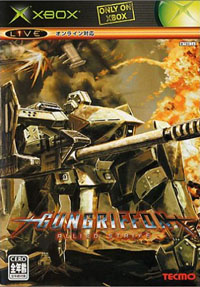 On paper, Allied Strike offered considerably more than Blaze could have ever hoped to. Online multiplayer was one major element but the player could finally utilise both a first and third person camera now too. However, Allied Strike was a completely travesty for the series.
On paper, Allied Strike offered considerably more than Blaze could have ever hoped to. Online multiplayer was one major element but the player could finally utilise both a first and third person camera now too. However, Allied Strike was a completely travesty for the series.
Functionally whilst quite precise, the overall game ran very slowly. This is not to say its framerate was in any way lacking but that the AWGS’s themselves moved at a slower pace. In addition the flight controls from Blaze were quite noticeably directionally limited, as was the rolling functionality. So you were locked in more in terms of your basic movement. A lot of this may have stemmed from the new online multiplayer focus, so as to keep multiplayer matches more tactical and balanced, but the singleplayer game suffered quite noticeably as a consequence.
The most bizarre fault of Allied Strike though was how badly it looked. Considering that this was released four years after Blaze and on more potent hardware, you would expect a bit of a visual facelift. At the very least a much greater level area and draw distance, things that would actually functionally matter.
Unbelievably, Allied Strike looked worse than Blaze did for the most part and had a far shorter draw distance to boot. Again, fingers have been pointed at Tecmo as they acted as the Japanese publisher for the game and that they actively encouraged feature creep to keep the game competitive with successful Western FPS games at the time. Though in typical fashion they probably still expected GameArts to hit their release date, so again the developer focused on making the game work at the expense of the visual polish.
Allied Strike was critically panned on release, mostly down to how painfully dated it was and that the immediacy seen in Blaze was long gone. In some ways, Allied Strike tried to emulate a simulation type of approach, which didn’t really fit the series’ lineage.
It’s a sad footnote for a series that has, despite its best intentions and innate quality, been undermined by factors like the host hardware and shortsighted publishers. That said, there’s still an opportunity here for GameArts to make something more considered for this generation of consoles, as Blaze is evidence enough that the Gungriffon series can deliver. Whether they’ll seize that remains to be seen though.
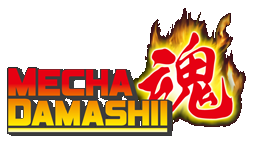
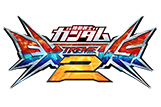
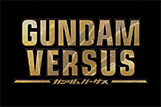








Thanks for the interesting write-up!
I remember reading a Gungriffon Blaze preview in a magazine about 9 years ago, but I didn’t get a PS2 back then and never played that game.
However, I just ordered a copy to rectify my mistake. This really looks like something I should enjoy a lot — the jumping alone looks fantastic! : )
Ah, I used to play this game in Sega Saturn. I had always thought it was one of the better mecha game at that time. I loved the night time mission, the hud looked so cool in night vision.
Of course, I was playing Virtual-on uncontrollably day and night, I only pop Gun Griffon in every once a while.
Hi Cacophanus,
Mecha Damashii is a very interesting blog. Some of the earliest reviews you posted sound as if they had been written a long time ago, like at the time of release. Did you compile some earlier writings as well? If so, where did you write before (besides on the front page of ic)?
Gungriffon I&II are two of my best memories from the SegaSaturn. I never got two play the PS2 and Xbox games. However, two details in your article strike me as odd.
You imply that ESP was eager to release Gungriffon II early and this might have impacted the quality of the game. But the way ESP deals worked, I am a bit confused why they would do that. ESP was only a publishing shell financed by CSK for these small studios and had almost no major editorial input on any of the games, as far as I have heard from developers who worked with them.
The other point which is surprising me is the sales of Gungriffon Blaze. You wrote that “Blaze did very well”. If I understand correctly, you mean the game finally reached a (much?) larger audience than what the series had known on the SegaSaturn.
But that seems odd to me as overall sales for video games in Japan were weaker in 2000 than in 1996. Early PS2 software sales were notoriously low.
From Geimin’s data (Famitsu numbers), the first Gungriffon was almost certainly a much bigger success in Japan than Gungriffon Blaze. It reached over 170,000 copies before the Satakore version.
Gungriffon Blaze sold around 60,000 copies. There was a The Best re-edition in 2002 as part of a series of re-releases from early PS2 titles. It never tracked anywhere and given the late year of release, the sales were probably limited.
For the sake of comparison and since you mentioned it in the article, Armored Core 2 sold slightly over 200,000 sales in the same year. To give a context of the software sales at the time, such sales were enough to make it one of the biggest near-release successes of the PS2.
In Japan at least, I doubt that Gungriffon Blaze sold even half as many copies as Gungriffon did. Which means that to achieve bigger sales worldwide (if this is what you implied instead), Gungriffon Blaze would have needed terrific sales from the North-American market. Yet I do not remember Working Designs ever mentioning the game as one of their major successes (they usually mention the PS1 releases or Dragon Force when pressed on the topic); Vic Ireland is fairly easy to get in contact with and open about the topic, should you feel the need to verify how well the game did in the US.
It does not mean Game Arts benefited more from Gungriffon than Gungriffon blaze, as the publishing deals signed with Capcom and Working Designs might have worked in their favour. But regarding sales themselves, I am very doubtful.
Good luck with the site and thanks for the numerous video uploads.
The sales of Blaze in Japan were indeed low and that was one of the main reasons Capcom didn’t pursue further iterations of the series. However, the global sales were much better overall compared to the two Saturn games. The US sales were decent but the European sales were far better still. Whilst Blaze didn’t quite eclipse Gungriffon in terms of Japanese sales, it did get relatively close with the Best re-release but still not enough to rekindle Game Arts relationship with Capcom.
As for ESP, publisher relationships vary between developers. Normally, ESP are indeed just a publishing shell but in the case of Game Arts – post Grandia – there were vested interests that did exact a form of editorial control. It’s one of the main reasons, Game Arts never worked with ESP again and sought out a new publisher for Blaze.
The older reviews are indeed from other places I used to write, the list of places is fairly long though. I just thought it worthwhile re-printing them for a site such as this.
GG I and GG II were two of the best mecha action game’s I’ve ever played. I still have them, and I’m still frustrated by the fact that the fourth game was just horrible…
The first game was definitely a standout for the Saturn; it blew away other mecha games on the PS1 at that time. The second was even better–even though it was never released in the US and you had to struggle through the Japanese to play it.
Thanks very much for this…could you do a write up on another forgotten mech game BULK SLASH soon?
Great article! I owned the first two GunGriffon games on Saturn (I’m such a fan that I Imported GG2 the day it became available for import). I never played Blaze, but your commentary is enough to make me go out and buy a used PS2 and the game disc. And yes, Allied Strike is a travesty compared to the first two.
Anyway, great job in pointing out the highlights of the series from the fan’s point of view and attention to detail. It is good to see such a great gaming franchise get the respect it deserves.
Looking at the Gungriffon games, I think each one is special in their own way. The first one was groundbreaking in just about everything it did (the Saturn seems very impressive too compared to the PS1 and N64). The second game just improved upon what the first game did. The third one went with more of a arcade feel but still an awesome game nonetheless, and lastly the fourth game tried to implement quite a few ideas and I think they all work well for the most part and as much as I love mechs and mech games, I’m not disappointed with it one bit and I can appreciate gamearts work for what they did with it. In fact the fourth game is what made me buy an Xbox. I haven’t had the opportunity to play 1 and 2 but I would love to own them someday as well as a Sega Saturn. I hope Gamearts decides to make a new Gungriffon game sometime in the future as it’s a series that I think is just as awesome as some of the other famous mech game series.
Check the latest variant of GUNGRIFFON, so-called “HIGH-MACS SIMULATOR”!
http://page.freett.com/grape2004/
So, Back in the day when i purchased my copy of gungriffon blaze on ps2, i thought the fact the back of the disk was colored blue was neat….until it turns out that type of disc actually will slowly kill your (Early) ps2’s disc reader. That being said, I still play it on PCS2 emulator and it’s still as great as i remember. There’s also a fan made freeware game called High Macs Simulator, which intentionally looks more like the saturn versions, and is quite fun
Yeah, we covered that fan game back in 2013.
https://www.mechadamashii.com/news/news-high-macs-simulator-released/